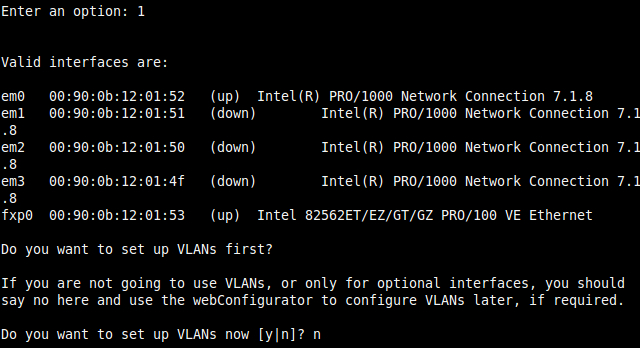This recipe describes how to identify a network configuration and assign the appropriate interfaces in pfSense.
You'll need to identify the MAC address for each Ethernet port on your pfSense machine before attempting to assign interfaces.
Access the console from the physical machine or enable SSH and connect remotely (see the Enabling the Secure Shell (SSH) recipe for details).
The home screen will display a list of interfaces, network ports, and IP addresses:

Choose option 1 to Assign Interfaces.
Skip setting up VLANs for now. See the Creating a Virtual LAN recipe in Chapter 5, Essential Services for more information.

Assign each interface to the interface of your choice by matching the MAC address to the interface address on the display:

pfSense, like any other computer operating system, references each NIC by some unique value (fxp0, em0, em1, and so on). These unique identifiers are often associated with the driver being used and make it easier for us humans to use than the associated MAC address (00:80:0c:12:01:52). Taking that concept a step further, an interface is simply a named placeholder for each port: fxp0=WAN, em0=LAN, em1=DMZ, and so on.




